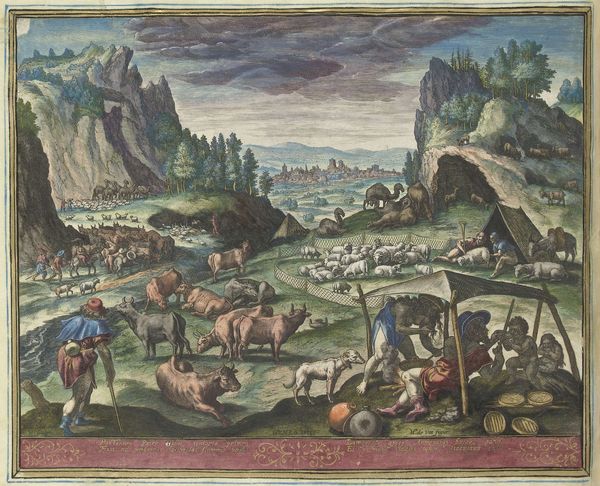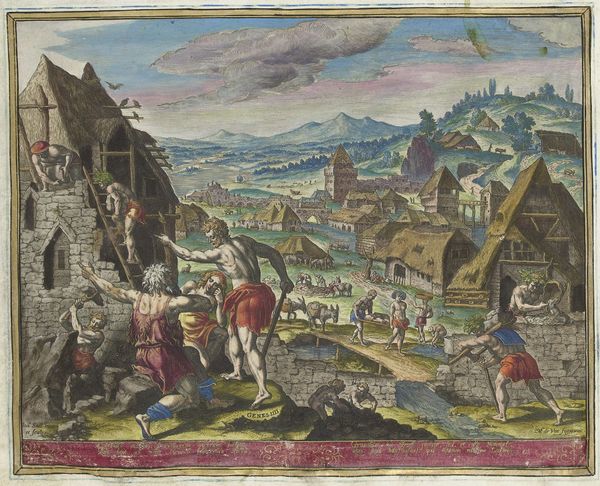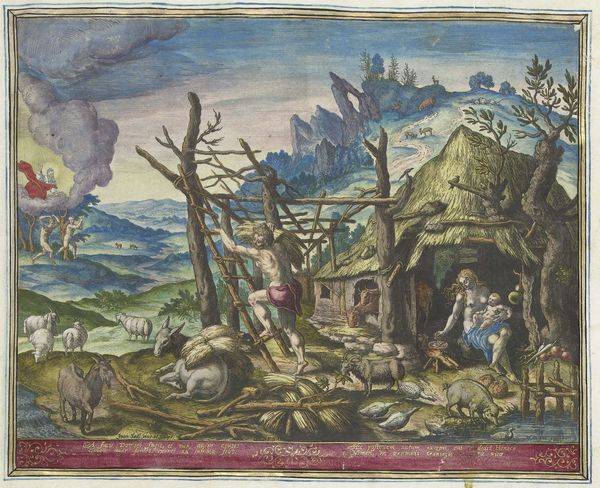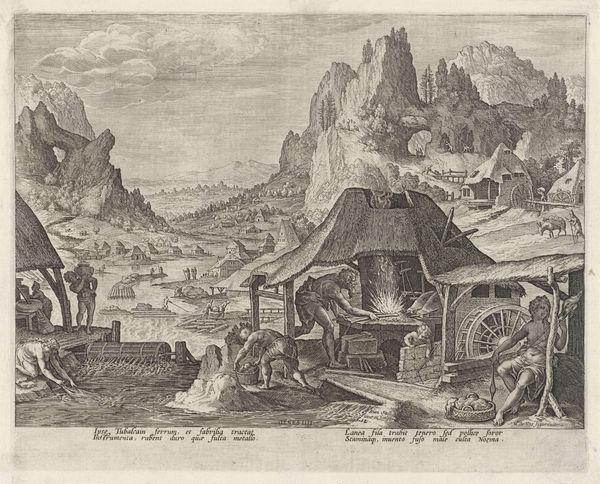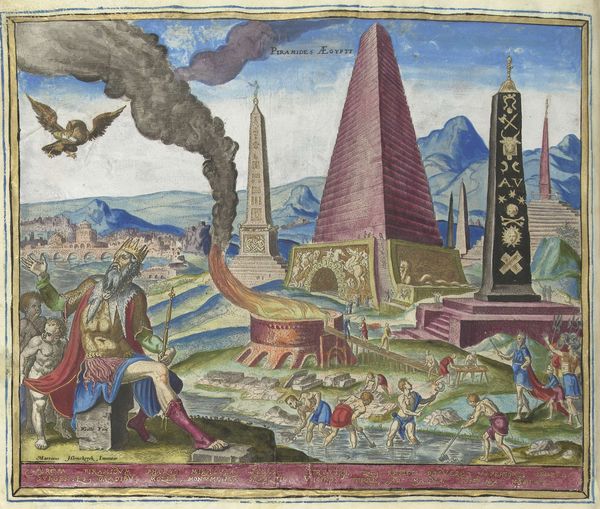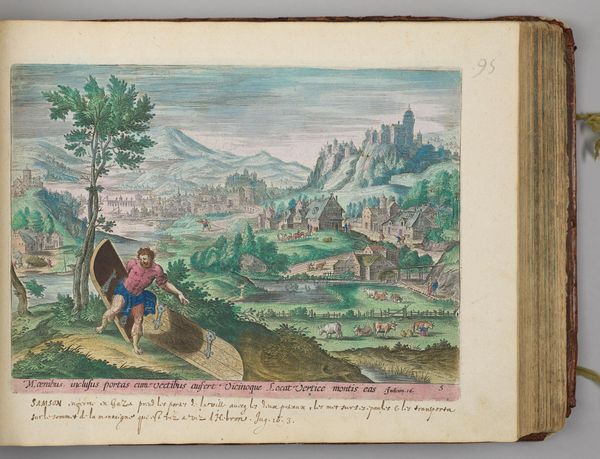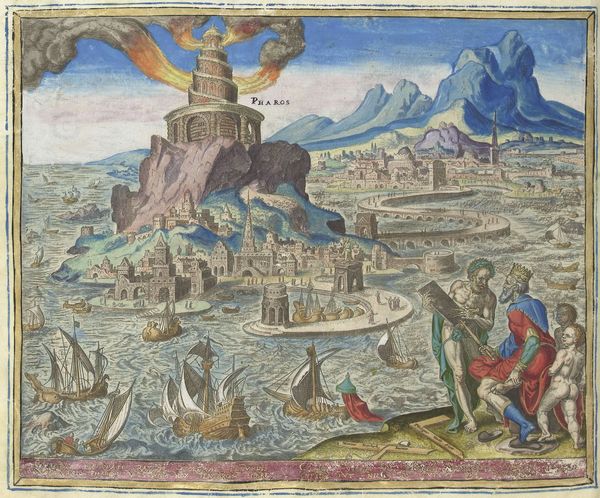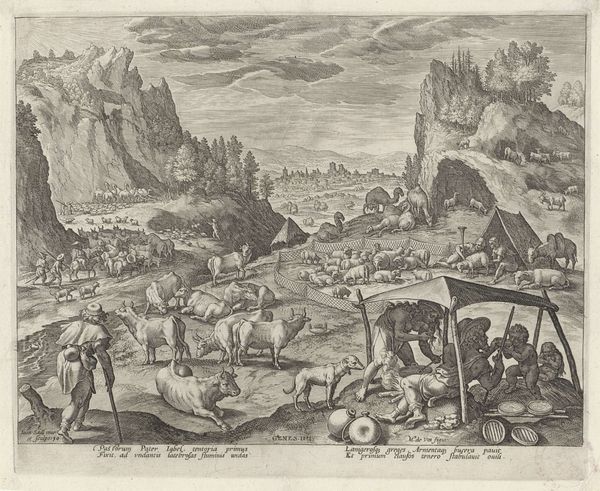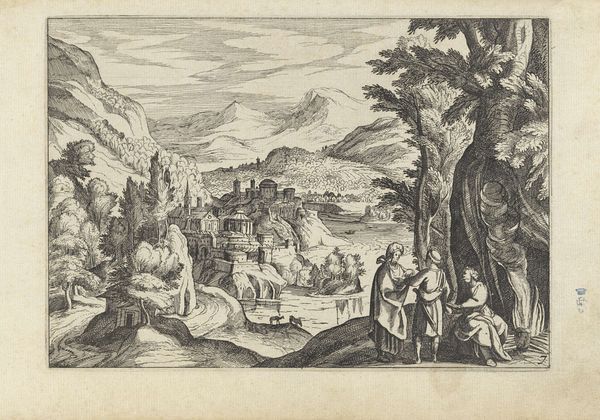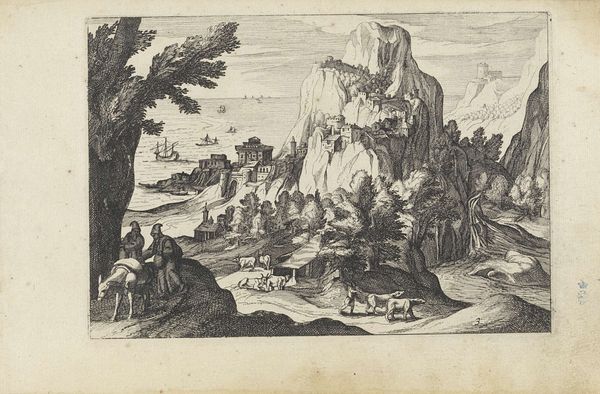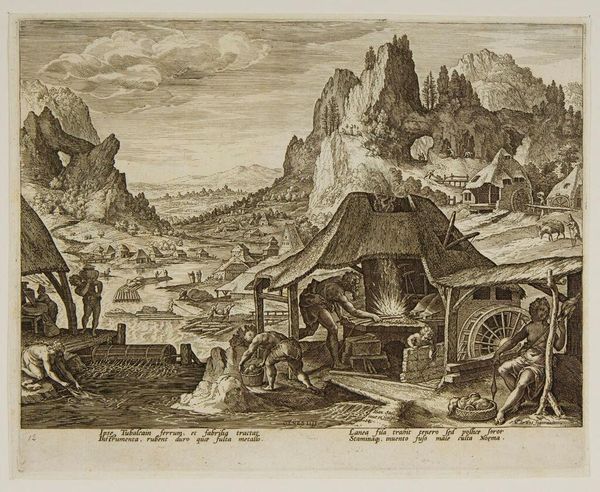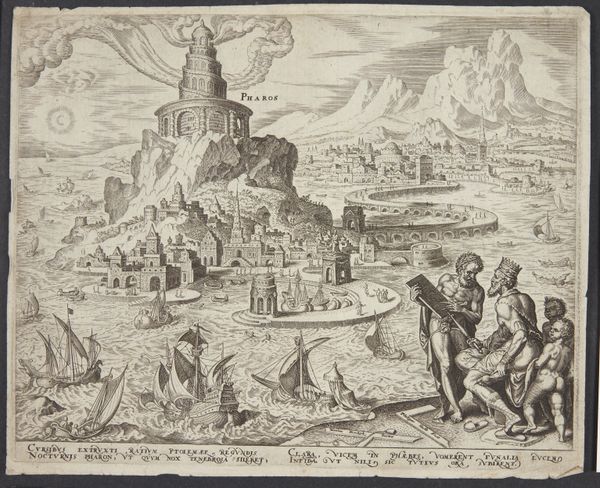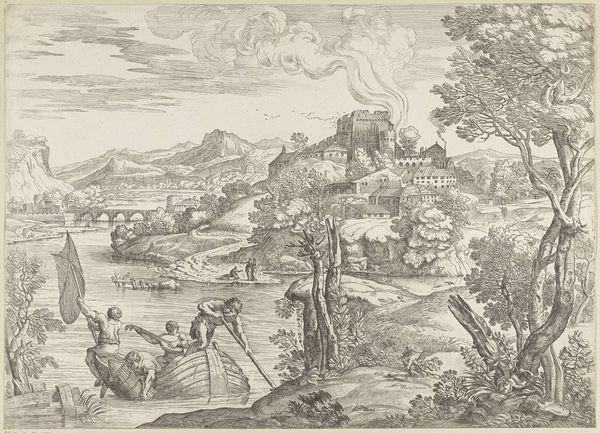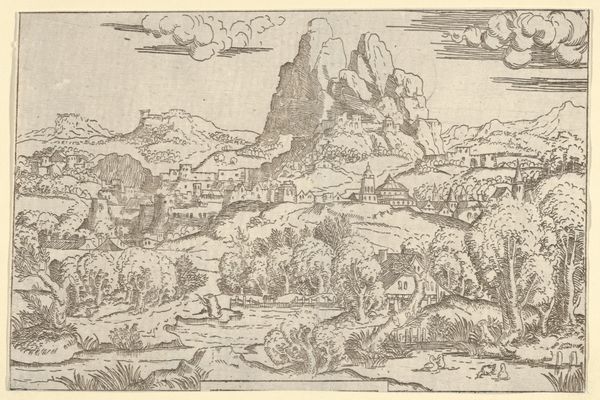
print, engraving
# print
#
landscape
#
mannerism
#
coloured pencil
#
genre-painting
#
northern-renaissance
#
engraving
Dimensions: height 198 mm, width 249 mm, height 537 mm, width 378 mm
Copyright: Rijks Museum: Open Domain
Curator: Here we have Johann Sadeler's 1583 engraving, "Tubal-Kaïn in zijn smidse," currently held at the Rijksmuseum. The print bursts with activity. It presents both a pastoral landscape and the clamor of human creation. Editor: The immediate sensation I get is that of almost claustrophobic industry wedged within something sublime. It's like the mountains themselves are watching this proto-industrial revolution unfold. Curator: Precisely. Sadeler masterfully marries the genre painting with landscape traditions here. The print shows the biblical figure Tubal-Kaïn, a descendant of Cain known as the first artisan in metalworking. Look at the details! The bustling smithy in the foreground, contrasted by a tranquil village scene extending into the background, complete with its thatched houses and mill. Editor: It's intriguing how he renders it all. The colours feel intentionally muted to a pastel wash that tempers the grit and grime of the scene. There's something oddly serene amidst the forging of what could be weapons or tools; a curious balance. Curator: Sadeler was known for his interpretations of the Old Testament. This depiction positions Tubal-Kaïn as a cultural hero, albeit a morally ambiguous one given his lineage. In this regard, the setting underscores a societal tension – nature coexisting with industry, peace and innovation entangled in the same moment. Editor: So, what exactly do you suppose Sadeler wants us to extract from this image? Is he cautioning about losing a connection to a simpler existence or admiring mankind's progression and inherent creativity? It could go both ways. Curator: I think he's deliberately avoiding a moral pronouncement. Sadeler invites contemplation about where innovation and development intersect. Are there potential disruptions and societal values we are forced to negotiate and consider whenever we move forward? He merely places it within a grand tableau and lets the viewer do the work. Editor: That rings true. As an artist, Sadeler seems less intent on prescribing meaning and more focused on portraying it, allowing the push and pull to linger. Curator: I think you've hit the nail on the head. I, for one, am left with the paradox of admiring and contemplating at once. Editor: Definitely. Thanks for walking me through this today!
Comments
No comments
Be the first to comment and join the conversation on the ultimate creative platform.
